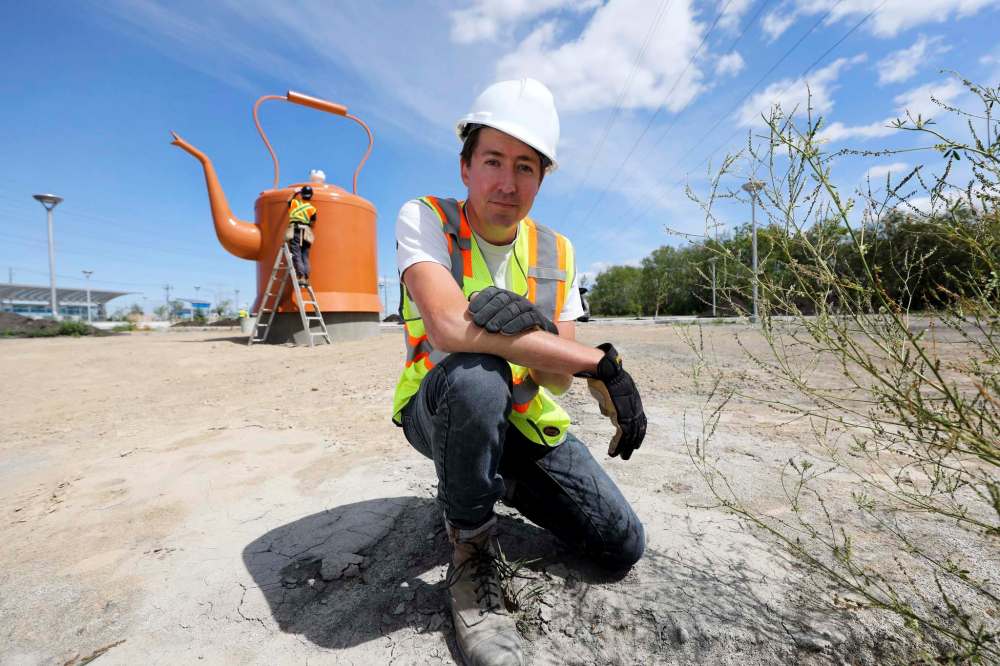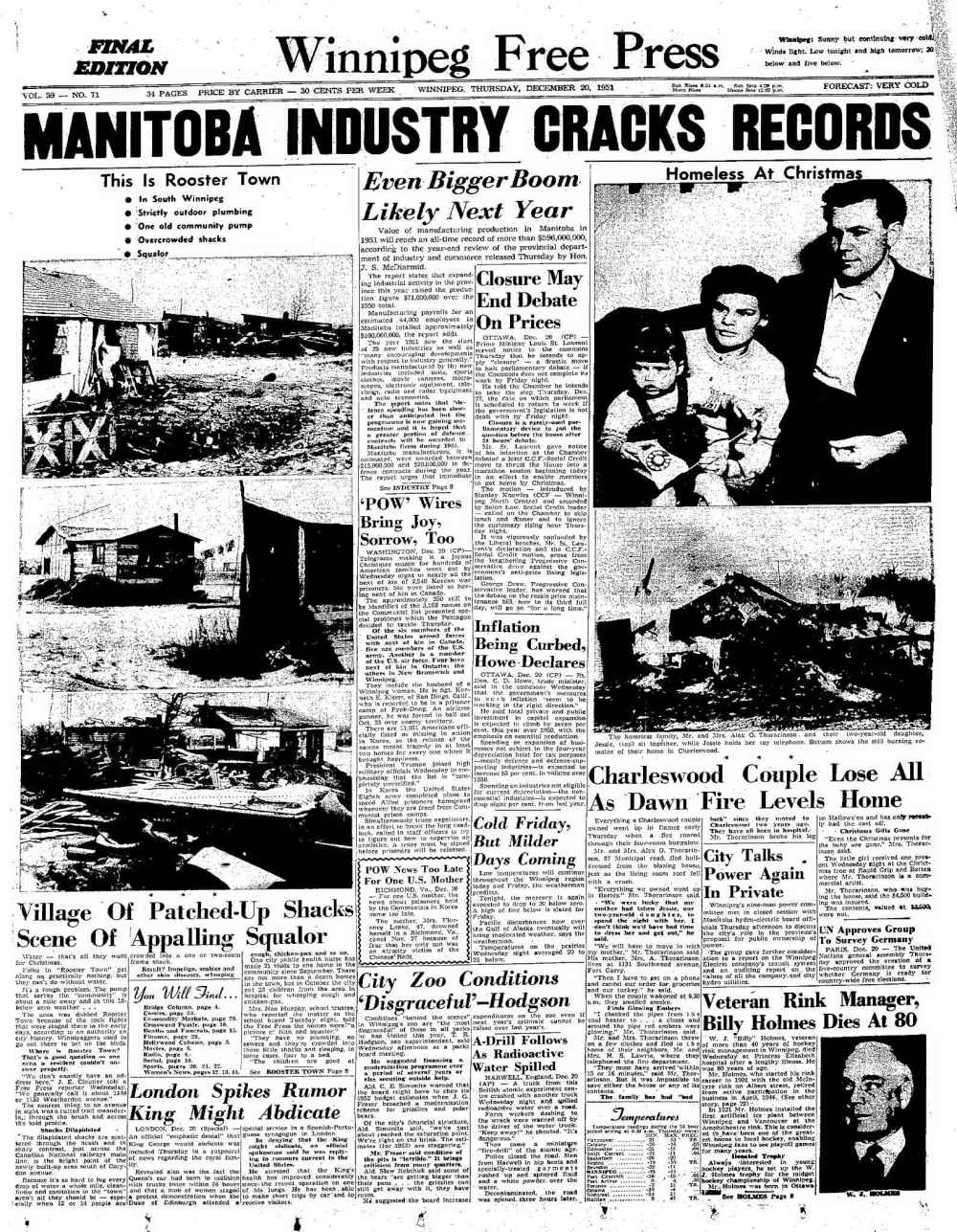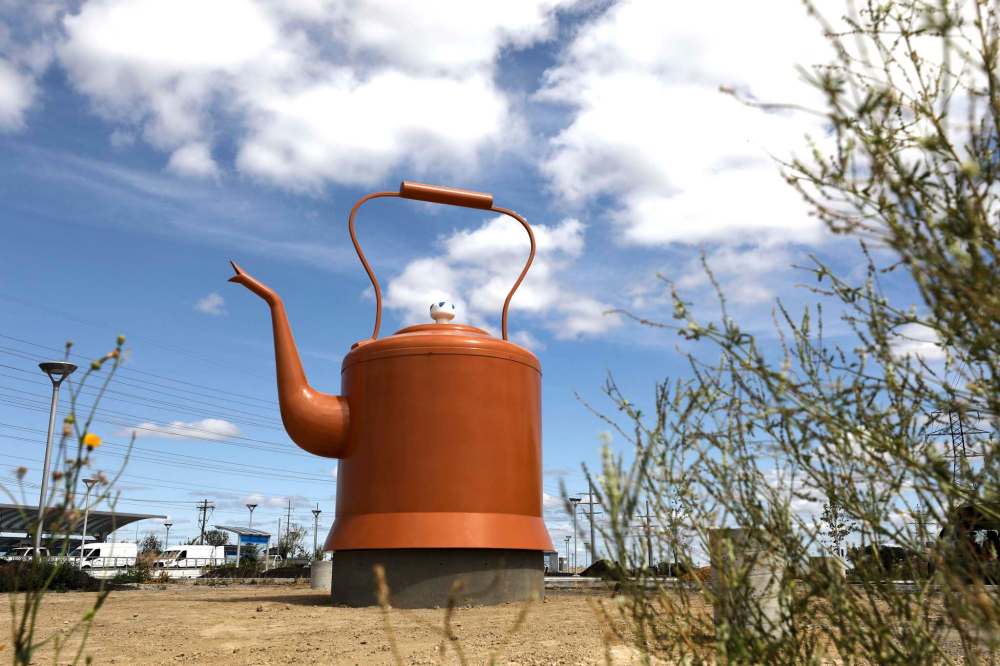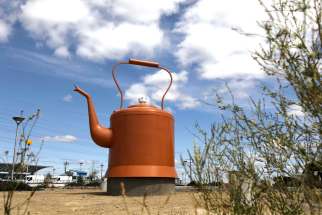Pipin’ hot Giant kettle honours historic Métis community of Rooster Town
Read this article for free:
or
Already have an account? Log in here »
To continue reading, please subscribe:
Monthly Digital Subscription
$0 for the first 4 weeks*
- Enjoy unlimited reading on winnipegfreepress.com
- Read the E-Edition, our digital replica newspaper
- Access News Break, our award-winning app
- Play interactive puzzles
*No charge for 4 weeks then price increases to the regular rate of $19.00 plus GST every four weeks. Offer available to new and qualified returning subscribers only. Cancel any time.
Monthly Digital Subscription
$4.75/week*
- Enjoy unlimited reading on winnipegfreepress.com
- Read the E-Edition, our digital replica newspaper
- Access News Break, our award-winning app
- Play interactive puzzles
*Billed as $19 plus GST every four weeks. Cancel any time.
To continue reading, please subscribe:
Add Free Press access to your Brandon Sun subscription for only an additional
$1 for the first 4 weeks*
*Your next subscription payment will increase by $1.00 and you will be charged $16.99 plus GST for four weeks. After four weeks, your payment will increase to $23.99 plus GST every four weeks.
Read unlimited articles for free today:
or
Already have an account? Log in here »
Hey there, time traveller!
This article was published 09/08/2019 (2315 days ago), so information in it may no longer be current.
At the Beaumont Station on the Southwest Transitway now sits a five-metre tea kettle.
You can’t miss it. It cuts a striking figure, especially when its shapely, copper-hued spout and handle are brought into stark relief by an azure summer sky. And although it was just installed this week, Winnipeggers are already quite taken with it.
“Everyone’s stopping to take photos,” laughs Ian August, the Métis artist behind Rooster Town Kettle, a permanent public artwork located near Parker Avenue and Hurst Way honouring the memory of a community that left almost no trace of its existence and whose history is little known.

Rooster Town, as it became known, was a largely Métis road-allowance community that existed from 1901 to 1960 on the land Grant Park Shopping Centre, Pan-Am Pool and Grant Park High School now occupy. The families who lived there had no streets, no running water and no sewer, just makeshift houses constructed from found materials. They struggled with poverty and racism, but they were a warm, welcoming, resilient community, though you wouldn’t know that from the newspaper coverage of the day.
“When I was looking into information about Rooster Town, most of what I found was racist articles from a settler perspective from the late 1950s, and they were more or less leading public opinion to the eventual evacuation of the Rooster Town inhabitants,” August says.
Take this Free Press headline, from 1951, for example: “Village Of Patched-Up Shacks Scene of Appalling Squalor.”
“I wanted to find some of the stories from people who lived there and the actual experiences from living in the place, because it was there from 1901 to 1960, so there was like four generations of people who lived there,” August says. “I wanted to find out their stories and the day-to-day moments.”
August turned to the few books that document this chapter of Métis history — including Maria Campbell’s Stories of the Road Allowance People — but he also spoke to descendants of Rooster Town residents. One particular oft-repeated anecdote stood out to him.
“Whenever anyone knocked on one of the doors, the first thing they’d go is holler, ‘Come in, there’s room,’ (and) whether there was room or not, they’d make room. And then they’d put the kettle on for tea. I wanted to use the kettle as a symbol of Métis hospitality.”
The kettle is also a poignant symbol of water rights. Many Indigenous communities in Canada are living under boil-water advisories spanning decades, including Shoal Lake 40 First Nation, which has been under an advisory since 1997 despite the fact it’s surrounded by the lake that has provided drinking water to Winnipeg for a century.
“I wanted to make the kettle big enough for a boil-water advisory for the maximum amount of people who lived in Rooster Town at one point, which was about 250 people,” August says. “It’s a visual representation of how much water you’d need for 250 people per day during a boil-water advisory, according to the UN standards for water.”
That’s about 50 to 100 litres per day, per person.
Rooster Town residents relied on a pump for their water, so water collection was also part of their day-to-day lives. Farther down the cycling path from the kettle are silhouettes August has created of people walking with buckets and carrying water on sleighs, a sort of companion piece. And though it’s crafted from stainless steel, August wanted his giant kettle to look like the ubiquitous copper kettles you’d find in Métis kitchens. He even hand-painted the blue-and-white ceramic pull.
August hopes the kettle sparks people’s curiosity.
“You can walk by and see it, you can drive by and see it, you can see it on the bus on the way to university,” he says. “You might just see it as the big kettle you pass for the first 15 times, and then if you’re walking by, there will be an info panel. Over time, it’ll be a way into that history, so I think that’s ultimately the most important thing.”
“(Public art) can create meaning through its own existence and be place-making, or it can evoke the meaning the artist is talking about, or it can do both,” says Alexis Kinloch, project manager of public art at the Winnipeg Arts Council.

Rooster Town Kettle is one of seven pieces of public art going up along the Southwest Transitway in a partnership between the Winnipeg Arts Council, the City of Winnipeg, PCL Construction and Plenary Roads Winnipeg. The artworks have ties to Fort Garry in some way.
“We really wanted to have artists bring out the natural history and the cultural history of this region. There’s so much we found,” Kinloch says.
Other works include Public City Architecture + Urban Ink’s ROW ROW ROW, which was inspired by the seigneurial lot system used to divide settled land in Fort Garry, and Warren Carther’s (Un)Still Life with Spoked Wheels, which honours the ingenuity of the Red River Cart.
Tiffany Shaw-Collinge’s art addresses Métis land rights, while Jeanette Johns’ piece looks at the evolution of mass transportation in Winnipeg. Bill Burns’ Salt Fat Sugar & Your Water Is Safe addresses the ways in which sustenance sits at the intersection between spirituality and industry, and Kelty McKinnon and Cindy Mochizuki’s Tensai, which will sit adjacent to the Manitoba Sugar Company factory building, explores the link between the sugar beet and Japanese-Canadian history.
Indeed, public art does much more than dress up a concrete urban landscape.
“It’s a great way to tell the story of the city,” Kinloch says.
jen.zoratti@freepress.mb.ca
Twitter: @JenZoratti

Jen Zoratti is a Winnipeg Free Press columnist and author of the newsletter, NEXT, a weekly look towards a post-pandemic future.
Our newsroom depends on a growing audience of readers to power our journalism. If you are not a paid reader, please consider becoming a subscriber.
Our newsroom depends on its audience of readers to power our journalism. Thank you for your support.













